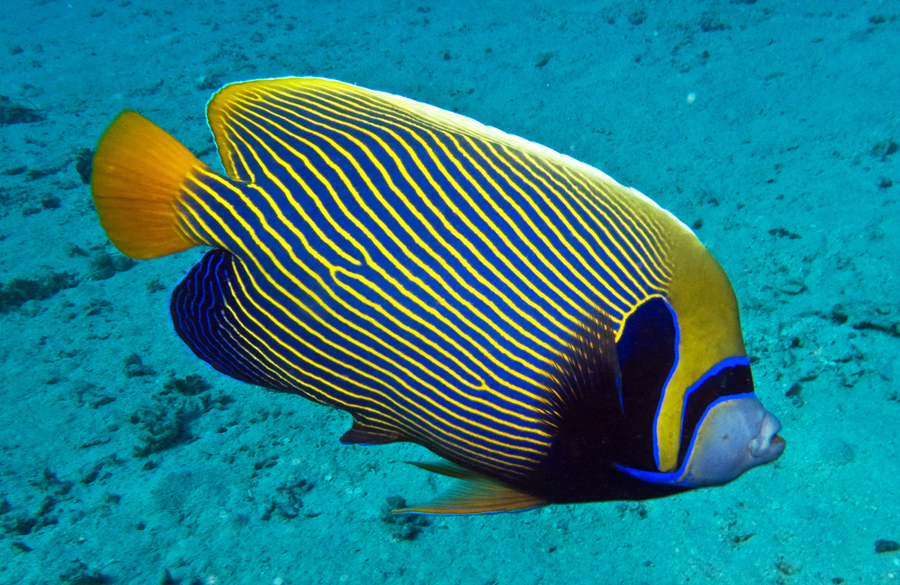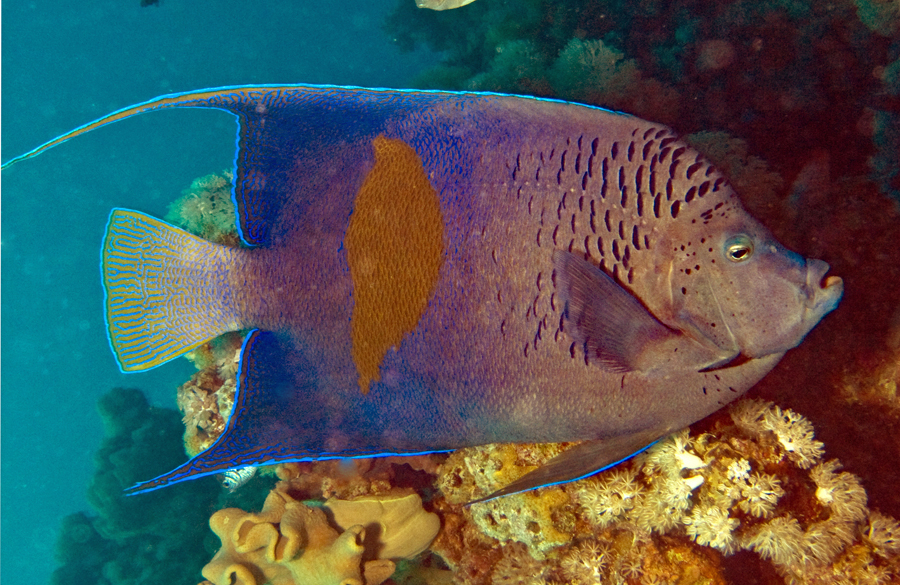EMPEROR ANGELFISH
Whom the emperor ennobles, the emperor enjoys nobility- We divers can make use of this quotation by dealing with the emperor underwater.
To be precise speaking about the angelfish - Pomacanthidae.
Like a real emperor, also the angel-fish has its territory, over which it rules.
The territory can be up to 1000m2 for a large angelfish.
The angelfish is just as colorful as the robes of an emperor when he shows himself to his underlings.
The most widespread angel-fish is the emperor-fish - Pomecantus Imperator. It grows up to 40 cm and lives mostly alone. Sometimes also in a partnership or even more rarely he even affords a harem.

The regal angelfish - Pygoplites diacanthus is also more widespread. It is very shy, probably because it belongs with a size of max. 25 cm to the smaller ones. They therefore live in cracks and caves and always close to the coral reef, where they can retreat very quickly.

The Yellowbar angelfish Pomecantus maculosus, lives, mainly in the Arab waters, therefore in the red sea.
Clearly to recognize at the big yellow stain, that is very similar to the African continent in the form. It is furthermore with full-grown 50 cm one of the biggest emperor-fish.

The angelfish are very colorful and have the same shape as the butterfly fish - Chaetodontidae. This is the reason why the angelfish were assigned to the species of butterfly fishes for a long time.
In the course of time, however, so many differences, even internal, morphological, have been found that they were placed in a separate family.
There are over 85 types.
Good to know. But it doesn't help me if I as a diver want to recognize if the colorful fish is an angelfish or one of the 130 species of butterfly fish.
If we know this characteristic, we divers can immediately recognize if it is an emperor fish or a butterfly fish.
The characteristic is a thorn which is clearly visible at the lower gill edge, directed to the back.

This thorn is not only the safest distinguishing feature but serves the angelfish also as a weapon while defending its empire.
To prevent its offspring, the still small young angelfish, from being regarded and attacked as potential enemies by the ruling emperors in the reef, evolution has reached into its bag of tricks. The young angelfish has a completely different coloration than the adult animal. Only when the young is big enough to create and defend its own territory, the color change takes place, which makes it look the same as the adult.
More about this color change see SUBDate No. 54 from June 1, 2017
What do the angelfish eat? Their food ranges from zooplankton, algae, sponges to small animals.
For the reproduction, sexually mature female animals change into males if required. With a Balzritual, usually with sunset, thousands of eggs are delivered. After a few hours the larvae hatch from which the young angelfish develop. Within 12 months they mature to adult emperors and show themselves in their splendid colored robe to us divers.
Photos: Johann Vifian
Source: Wikipedia Book reference: 3-440-09336-5
